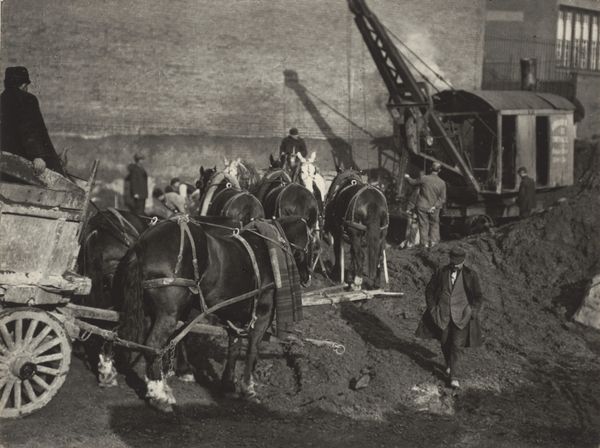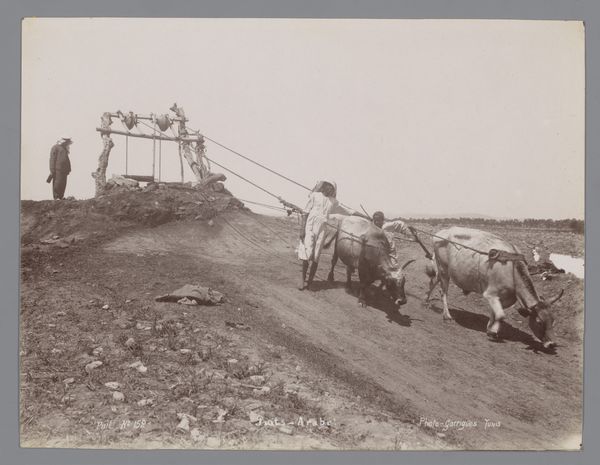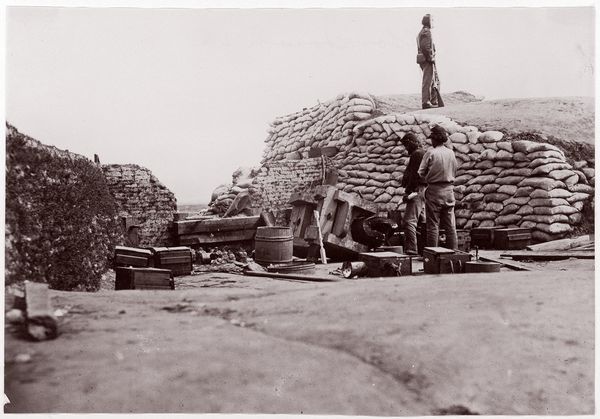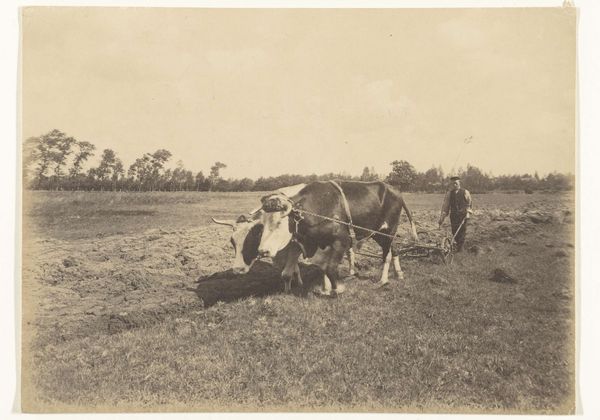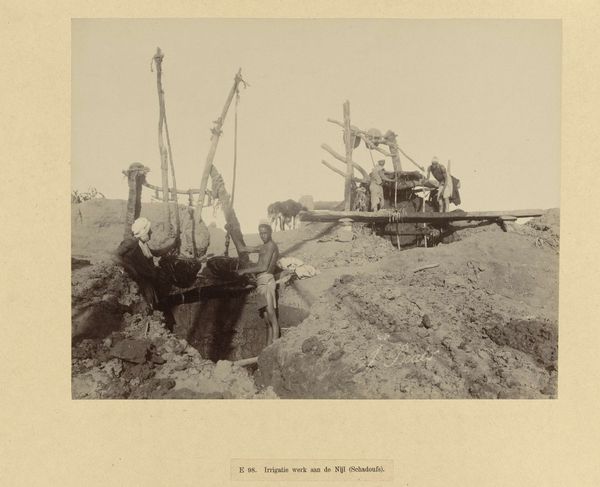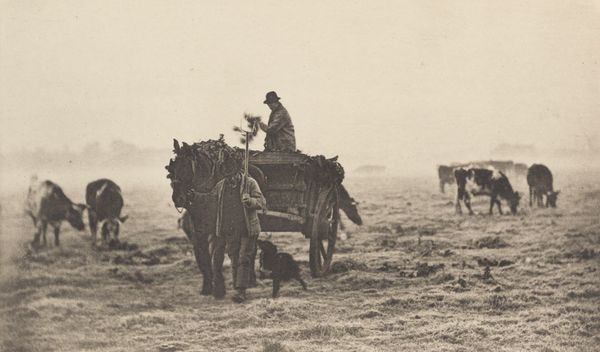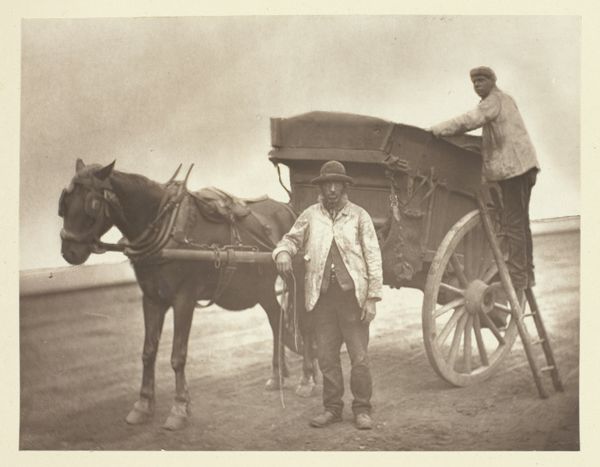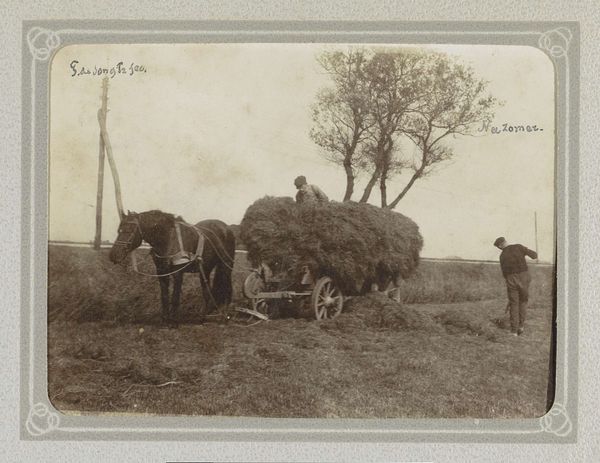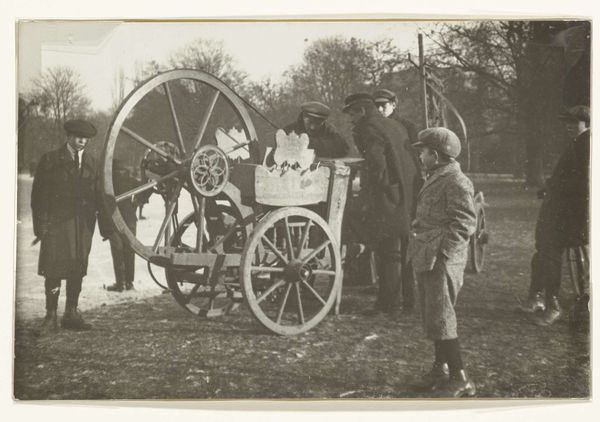
photography, gelatin-silver-print
#
16_19th-century
#
photo restoration
#
landscape
#
photography
#
gelatin-silver-print
#
genre-painting
#
realism
Dimensions: 20.1 × 28.9 cm (image/paper); 33.8 × 42.6 cm (album page)
Copyright: Public Domain
Curator: This is Peter Henry Emerson's gelatin-silver print, "The Clay Mill (Norfolk)," created around 1883 to 1888, now residing here at the Art Institute of Chicago. It certainly sets a mood, doesn’t it? Editor: It’s heavy, in all senses of the word. The tones, the subject matter… it evokes a sense of rural toil. One feels the weight of the labor represented here. Curator: Absolutely. Emerson, through his photography, engaged with the then-burgeoning Realist movement. Notice the details: the texture of the mud, the strain on the horse. His commitment was to accurately document the lives and labour of the rural working class in East Anglia. Editor: And he did so during a time of considerable agricultural depression in England. This image is not merely a study of rural life; it's a visual testament to the often-invisible labor upon which society depended. The presence of the workers alongside the horse almost conflates human and animal labor, pointing towards systemic exploitation. Curator: The materiality also intrigues me – a gelatin silver print. Think about the chemical process, the darkroom manipulations Emerson employed. The final print, almost monochromatic, results from layering materials and techniques. It is very evocative of a simpler time, despite its creation using some rather complicated chemical processes. Editor: And the softness, achieved through his techniques, adds to the scene's emotional texture. It's not a harsh, documentary style. Instead, the scene is infused with a delicate vulnerability, prompting a conversation regarding what it truly means to “document.” Curator: This blurring softens the focus, which encourages contemplation on these men’s arduous occupation, as well as their relationship to the horse in front of them. Editor: Exactly. And to understand it as a part of a larger discourse, remember how photography at the time, struggled for validation as a form of art; but here Emerson manages to elevate manual labor to high art, granting value to its laborers and their social and physical circumstances. Curator: Ultimately, the value in an image like "The Clay Mill," rests in understanding both the technique and the artist's careful selection of subject matter. It invites viewers to question their own relationship to labor and materiality, even today. Editor: And hopefully, challenges the art world to reassess who and what constitutes a worthy subject for art in the first place. It’s a photograph steeped in social significance that continues to echo across time.
Comments
No comments
Be the first to comment and join the conversation on the ultimate creative platform.

